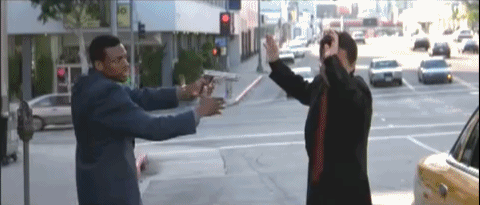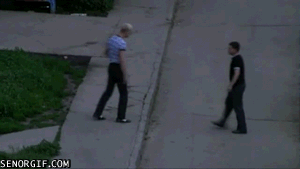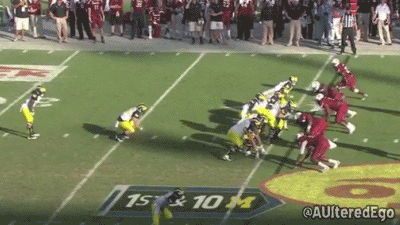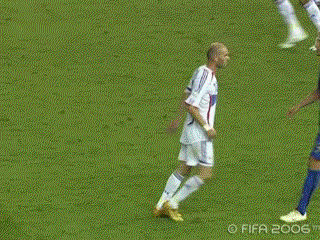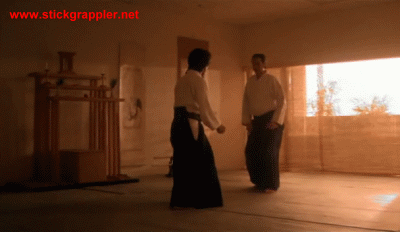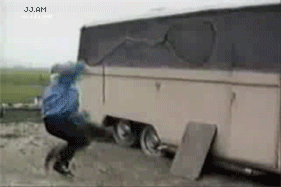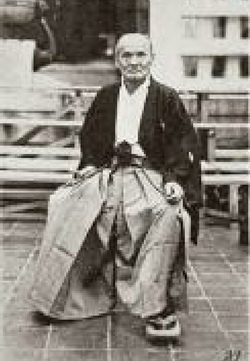


Inside Nihon Goshin Aikido ~ #31
October 5, 2015
In This Issue:
- Irimi ~ The Movement of Hope ~ The True Sign of An Optimistic Future
- Nage’s First Ambition: To Cause Pain or To Imbalance? A Study In Priorities Of Work In A Martial Defense
- Website Updates ~ We Have A Few
- Growing Our Subscriber Base ~ Please Forward to your Friends and training buddies
- Announcements: The Last Fall Seminar is Here! Got a rank promotion, opening a new dojo, hosting a seminar, etc., let us know, and we’ll spread the word
Greetings Nihon Goshin Aikido Aficionado!
It’s October, and after careful consideration of the happenings during the previous month, I’ve come to one significant conclusion. My South Carolina Gamecocks are not a very good football team right now. That said, as all good South Carolinians must, I know the state motto: Dum Spiro Spero ~ “While I breathe, I hope.”
When you think about it, “hope” is an interesting study when you get right down to it. Yes, there is certainly something to be said about someone who has “hope.” “Hope” is akin to bravery in the face of all possible outcomes; an everlasting optimism in good times and bad times. “Hope” puts us in a place where we do not cower to potential defeat though we may be defeated.
Unfortunately, “hope” is an outlook many do not share anymore, and in some ways I believe this speaks to one of the deepest fissures in the fabric of our country today. A world without “hope” is a world without heroes. The hero must step forward to be counted. “Hope” moves in that way also ~ forward.
As it relates to aikido, well I submit, if “hope” could be expressed as an aikido movement, “hope” would be the straight down the line entry movement you see in the Classical Technique of Scoop Against the Kick. It is truly a forward movement. I call this motion the Irimi Movement.
****** Now somewhere there is someone re-reading what I just wrote and thinking, “That’s not right ~ Irimi Does Not Mean Forward!” So, before we go further, let me state for the record that “if you own the two books currently in print about Nihon Goshin Aikido: “Nihon Goshin Aikido: The Art and Science of Self Defense” (NGA) and “Integral Aikido” (IA), and I recommend you own both, you probably have noted that my description of the Irimi Movement is not the same as the descriptions defined in the pages of either of these books! Consider pages:46-49 NGA and pages 60-65 of IA. In both books the “Irimi Movement” is described as a movement that encompasses a 360 degree rotation from start to finish (either to the inside or outside). This is not the definition I am using.
In my mind, what the books label as “Irimi” (whether an “Inside” or “Outside” Irimi Blend) is actually a combination of three unique Aikido footwork patterns or movements.
Specifically, the blend referred to as “Irimi” in both books is probably more accurately described as “Irimi-Tenkan Tenkai.”
Consider the breakdown of “Irimi Tenkan Tenkai” (and their Japanese meanings):
Irimi ~ “Enter”
Tenkan ~ “Turn” 180 degrees”
Tenkai ~ “Pivot” 180 degrees” (as in our hamni turn)
Presented in this way, the description of “Irimi Tenkan Tenkai:” matches perfectly with both books’ descriptions of the 360 degree blending rotation referred to as “Irimi” ~ whether it is described as an inside or outside irimi blend.
What does it matter? Well, I believe that making this distinction is important because if you label what is actually “Irimi Tenkan Tenkai” as “Irimi,” you have no words to accurately describe the footwork patterns you see in Classical Techniques such as “The Unbendable Arm Against the Kick” (whose footwork is most accurately identified as an “Irimi Tenkan” ~ eg: Irimi (Enter) and “Tenkan” (Turn 180 degrees), or the Scoop Against the Kick in which you just Irimi (Enter) straight down the line without turning or pivoting.
Why not consider a picture? Look at the footwork diagram to the left. As I said, I call this the Irimi Movement (as does pretty much everyone else except us). You call it whatever you want, but let’s agree on the nature of the movement if we can’t agree on what we should call it.
Can we agree that in the picture to the left, Nage is moving straight down the center line into uke, and does not turn or pivot? If we can agree on the picture to the left, arguing over vocabulary becomes an irrelevant exercise. Onward.
1. The Irimi Movement ~ An Expression of Hope In Motion
As you can imagine, the Psychological Impact of a strong Irimi (entering) Movement (see picture to the left previously mentioned) ~ which is the entry movement to the Scoop Against the Kick ~ can be devastating to a potential attacker. At the moment the attacker expects to hit you, you are no longer where you once were, AND you are standing right in front of him. You have compromised his mai-ai (distance), and now he is the uncomfortable and vulnerable one.
A decisive action ~ rooted in hope and confidence, the Irimi Movement has turned the psychological tables on uke, and it is now the attacker who will be backing away. The advantage of the Irimi Movement is that it takes you immediately to the decisive center of the fight, and it is probably the LAST place your attacker would ever assume you would be.
Can you get there in time? Here are a couple of video clips we think you’ll enjoy. They each demonstrate strong Irimi concepts, and there is much to learn from them.
Consider the video clip to the left. This is a decisive Irimi Movement, somewhat foreign to our nature and initial training. In the beginning, we are taught to react to punches generally by blending away from them. That said, when the attack is “that bad,’ you don’t need to move away at all. Consider a boxer’s response to your haymaker (wild roundhouse punch). He will most likely come straight down your center line and flatten your face before your circular punch ~ which is traveling a greater distance due to its prescribed arc ~ ever makes contact. He may not even bother to cover. This is essentially what happens in the first clip. The decision to enter is met without uke resistance, and the fight is quickly ended with a knockout. I find the small talk at the end humorous.
Had the strike failed to knock out the uke, nage is still ideally positioned, to follow up because being “inside” has some very distinct advantages. You’re too close for kicks to be effective, and punches don’t have time to “get wound up,” so they will most likely lack knock out power. Most importantly, your aikido still works inside as well.
Zidane, once the best play making midfielder in the world, utilizes a perfect Irimi movement in the next clip down to express his World Cup frustrations back in the day. Of course, the attack made him the world’s most notorious soccer villain (a title currently held by infamous biter of opponent’s flesh ~ Luis Suarez). Zidane’s decisive Irimi Movement is epic nevertheless.
On a more aikido-ish front, Steven Seagal makes nearly proprietary use of strong Irimi movements. Consider his Spin Around Application to the left. A careful study of his footwork demonstrates the value in operating out of a “no stance” as we do in Nihon Goshin Aikido ~ as he has to first switch his hamni stance before he enters. Of course, I’d never tell him that! ~ lol
Now one of the best Irimi Movement decisions of all time is here (video to the immediate left). Note how this martially trained Clemson football fan is completely psychologically shattered the moment the tiny rooster (eg: Gamecock) decides to enter. Filmed at a football tailgate in Clemson SC, we are especially thankful that the Clemson fan was not harmed in the filming of this video. Regrettably, the fan in question did soil a perfectly good pair of blue jeans, but as everyone knows, Clemson fans are used to soiling their britches at the sight of Gamecocks nearby.
So wrapping up, “Why do We Like The Irimi Movement?”
#1 It is the natural and arguably quickest response to all common circular attacks (haymakers, roundhouse punches, etc.); especially when they are thrown by untrained attackers.
#2 It puts us in the center of the action, and forces our opponent to the outside.
#3 It is often psychologically devastating for uke ~ as you are not “supposed to” enter when you are attacked, or about to be attacked.
I wonder, what is the Latin phrase for “When I Irimi, I Hope” ~~~ I need to know because I want that to be my motto.
2. Nage’s First Ambition: To Cause Pain or To Unbalance? A Study In Priorities Of Work In A Martial Defense
In any type of operation, there are a series of things that should be prioritized. In the army we called them “Priorities of Work” ~ and they could be divided into all sorts of things: What to do if your weapon misfires, What to do when occupying a defensive position, What to do when a soldier is wounded, etc.
All these actions were formalized in some Army training manual or another. You just had to remember them. Still even without a manual, you have formalized all kinds of things according to priorities. Consider your morning routine. It is also based around a set of repetitive priorities that make sense. Wake up! Use Bathroom! Wash Hands! Wash Face! Brush Teeth! Get Dressed! Etc. Get them out of order, and weird things start happening.
At the fall 2015 Nihon Goshin Aikido Seminar in Lexington, SC this year two of the instructors expressed ideas about priorities when dealing with martial attacks.
Controlling uke was obviously paramount and a theme expressed in varying shades and degrees by all 4 instructors. In one of the sessions, a karate instructor floated the idea that control could be gained by inflicting pain with strikes. In other words, “if you inflicted pain in a certain way, uke would respond in a certain way.” Uke’s anticipated response to pain would allow nage to “catch up” to the speed of any attacker (even if nage was “old and slow”) by anticipating where uke would be next. It was an intriguing concept which got me to thinking about my own priorities of work in the defense. When someone attacks me, what are my priorities of work?
Background: In our dojo, “move first ~ technique second” is an oft quoted philosophy. I’m sure something similar is said in your dojo also. Nage has to move, but should his first movement cause pain, or unbalance?
Personally, I prefer to unbalance. As an athlete, I’ve worked through all kinds of pain. One of the best matches of my tenure as a soccer player was played on a broken foot (that was broken about 5 minutes into the match). Every time I took a step, whether walking, jogging or sprinting, I could feel the broken bones in my foot rubbing against each other (like the feeling you might get if you pass your knuckles back and forth across the edge of your desk). Still the match was more important than the bones in my foot, and I was able to compartmentalize the pain for the entire game. Turns out it happens all the time. Former Alabama Football Legend, Bear Bryant played a whole football game on a broken leg. Just last year, Clemson Quarterback, Deshaun Watson played the entire USC versus Clemson football game with a torn ACL.
The point is that pain tolerance is different at different times ~ even for the same people. When you are calm, things seem to hurt more. Add adrenalin into the mix, and things seem to hurt less ~ or even not at all.
I know this last point to be true via first hand experience. While it is true that I played an entire soccer game on a broken foot, it should also be noted that I also once passed out while getting an ultrasound on my knee (which is a painless procedure, BTW). Crazy right?
So, while there is merit to the idea that causing pain could be helpful, I’m not sure you should rely on it exclusively; especially if you’re relying on nerve pressure points or joint locks.
As additional supporting evidence, consider this anecdote from a Seidokan Aikido seminar held this past Saturday. At one point during the seminar, I was working with a friend on an application to the front wrist throw. He was once a collegiate wrestler, weighs 240 lbs, and is very strong. This seminar was his first aikido experience ~ to which I had invited him. We were at the seminar together, and we agreed that it would be better if I were his partner the whole time ~ to help him understand what was going on, etc.
So the attack was a straight punch (tskui) from ai hamni (mutual hamni stance) to First Wrist Technique with an ~ ahem ~ “Irimi Tenkan” movement (Irimi: “enter” and Tenkan: “turn” 180 degrees).
He attacked, and I did the irimi tenkan movement. When I slowly applied the front wrist throw lock on him, he just stood there. I gradually increased the pressure, and then he finally said, “That’s starting to hurt a little bit” to which I said, “Just roll over on your side like the guy did in the demo, and your wrist will stop hurting.” He thought about it for a second and then powered up into me forcing me to release the grip on his wrist or break it (I released the grip), and then he got me into a head lock ~ which I decided not to counter. All and all, it was pretty funny.
After that little episode, I asked him, “Why didn’t you just roll over like the guy did in the demo?” He said, “Because I’m a wrestler, and I don’t want to be on my back.” My reply was actually a question: “But didn’t it hurt to power up against the technique like that? I could have broken your wrist.” He said, “Well hell yeah it hurt, but I wasn’t going to go down on my back if I didn’t have to.”
His cup was never empty, and that pretty much set the tone for the whole day. Throughout the seminar, the instructors would walk by and demonstrate to Matt and me the technique they had demonstrated to the whole group ~ as was their practice with all of the training pairs. Pretty quickly, I was invariably the uke selected in these mini demos. Only once did an instructor attempt to demonstrate a technique on Matt, and it was early in the day. It was also pretty funny. The instructor first tried to unbalance me, and I fell like a stone. He tried the same technique on Matt anticipating similar results, but Matt didn’t budge. The instructor tried it again without success, and then said, “You wrestlers ~ throwing you guys is like trying to get a cat to land on its back!” Then he smiled and quickly moved to the next group ~ leaving me to figure out how to throw a cat and have it land on its back all by myself.
So for the rest of the day, nothing (and I mean NOTHING) the instructors demonstrated ever worked exactly like it had been demonstrated when I tried it on Matt. Still, I managed to do most techniques by making sure I was keeping Matt’s shoulders extremely tilted and making sure he was completely off balance throughout the movement. I focused on dropping my weight to add leverage, finding the missing leg on his proverbial 3 legged stool, and putting his center over that missing leg. When they demonstrated joint locks, I opted to use a grip that would not lock the joint (because he immediately resisted every joint lock), and then combine the weaker control with big, and effective movements that promoted unbalancing my training partner. Most of the time, this allowed me to settle Matt to the mat pretty gently.
The best adaptation of this notion of extreme unbalancing was a Pull Down from the rear application where I used his hips as my lever. “Hips?” you say. Yes Hips! I initially scratched his forehead trying to use his head as a lever ~ in which I got great eye socket contact, (but moved nothing), and ended up losing my grip and scratching is forehead. I felt terrible about the scratch, but he insisted it was okay. Seeking something sturdier (that I could operate with 2 hands instead of one hand), I tried to connect with his traps (neck muscles) but to no avail. He backed up a little but I could not unbalance him enough to make him fall. The third time, I connected with both hips and used those as my lever. I pulled his hips back with both hands, and sat him down effortlessly. The hip connection worked perfectly every time.
All and all, it was an interesting experience for everyone, and testament to the importance of working with an unbalanced uke.
This of course leads me to summarize my last seminar of the month ~ which was the first one I attended ~ at Water Oak Aikikai with Shihan Donovan Waite. Each of the seminars had the same theme ~ unbalance uke as much as possible as quickly as possible.
The seminar with Waite Shihan was a Friday & Saturday affair. I slept in the dojo, which is by all accounts, a magnificent work of art ~ see dojo picture to the left. In each 3 hour training session (in which there were no breaks for water, etc.), we worked for a minimum of at least 45 minutes on Kokyu Dosa each session (see video demonstration ~ as this is Shihan Waite demonstrating the exact technique we were doing).
By the end of the morning session on Saturday, the tops of my feet looked like they had been passed over with a cheese grater, and I had a bruise on my left knee that is still tender a month later.
See the picture of my torn up feet to the left ~ I’m not exaggerating. It was nasty. By the afternoon, on Saturday, I had taped up most of my toes ~ as had everyone else. Our feet and knees were all torn up.
Toward the end of the afternoon session on Saturday, I worked with a guy named Mike ~ who was one of Shihan Waite’s former uchi-deshis (live in students). As we were training kokyu dosa for one of the last times, I asked him, “Why does Shihan Waite work on kokyu dosa so much?” To which he responded, “He loves it. I think he thinks it’s the easiest way to communicate the idea that you’ve got to unbalance uke before you can effectively move him.”
~~ And that pretty much sums up my experiences from all three seminars, which generally all contained the same centralized theme of unbalancing uke to establish control.
If you want to move uke ~ to get him to comply with your intention ~ you need to unbalance him first. Pain can wait. Make unbalancing uke your first priority.
Finally, in the sneak peak email that went out last week, I got a few responses to the initial question on unbalancing which I’ve added here to further reinforce the notion that unbalancing is the critical objective. I think there is a general consensus here in both replies.
I have a simple approach: pain is useless if it doesn't unbalance the attacker. I will sometimes prefer pain as a first tool, but pain isn't a tool unless you're using it toward an end. In and of itself, pain (absent injury) doesn't do anything useful unless it happens to scare them off. That's a pretty thin basis for self-defense. ~ Gerry Seymour
In Daito-ryu, NGA's ancestor we attempt to unbalance the attacker at the point of contact. I personally consider NGA to simply be Morita-Ha Daito-ryu (Daito-ryu interpreted through Shodo Morita ~ so they are very similar in approach and philosophy). I would not consider pain as the correct alternative or word. I consider the word "CONTROL" to be more appropriate. ~ Jose Del C. Garrido
Love to Hear Your Thoughts, What say ye?
3. Website Updates:
In the last couple of months, we have been working hard to update content on the website. This month we didn’t do much on that front, but please check out the Articles Section as well as the Archived Newsletter Section. We will work to add more updates in content over the month of October.
4. Newsletter Subscribers:
More subscribers is the goal ~ so can you help us grow our Newsletter Subscription Base by passing the website along to your training buddies and asking them to subscribe?
Our hope is to be an inter-dojo clearing house for all things NGA, but we need more subscribers to do that. Best of all, it’s free, and who doesn’t like the word “free!” Click Here to Subscribe! (And make sure your forward to all your training buddies, and would be training buddies).
5. Announcements:
There is one more fall seminar we’d like to share with you.
#1 October 9-10: Sensei Jim Giorgi 4th degree NGA, & author of Integral Aikido) will be in Winder, GA at Sensei Theron Bennett’s dojo. I hope to attend this seminar also. Details Here.
We would like to share your information on Seminars, Dojo Expansions, Relocations, Grand Openings, Promotions, and/or Other Information with our subscribers. Please forward all of your announcements to us so we can get the word out. Send us the information on your announcement, and we’ll post it here for you.
Stay tuned, and let's meet on the mat together soon!
Best,
Jonathan Wilson
ngaexperience.com

2014 - 2021 ngaexperience.com
Unless otherwise stated, the author’s views, musings, and opinions do not necessarily reflect the attitude of leadership within any of the various Nihon Goshin Aikido associations, or unaffiliated Nihon Goshin Aikido dojos.

The speed is fantastic, but is it faster than a bullet?
~ I’m not so sure. Adding off line movement with technique should provide a more consistent result, and with a gun takeaway attempt, you will probably only get one chance. Put all the odds in your favor and move your body too.

Cool Video demonstrating the Soft Ukemi Training Pedagogy.
Starts slow and close to the ground, and builds height gradually as you gain mastery.
One day ~~~ It will be mine ~~~ One day.
#weberollin’
#softukemithebomb
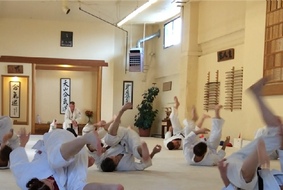

~ Elbow Chop Application ~ Subway Beat Down Style

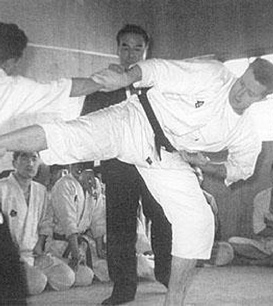
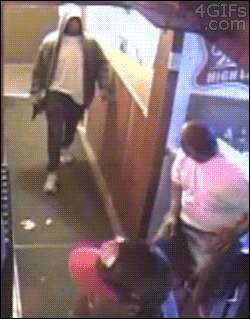

If possible, do NOT let the attacker raise his weapon!

Now This is One Fabulous Way to Get Off the Line!

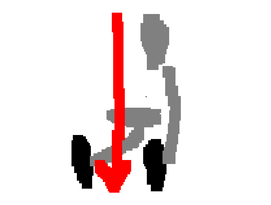
Irimi ~~~ Just Enter
(No Turn & No Pivot)
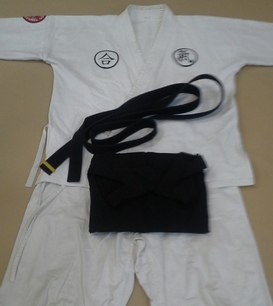

The Classic Lines of the Nihon Goshin Aikido training gi are unmistakable.
- White Gi
- “Ai” patch on the right breast
- “Ki” patch on the left breast
- Association patch on the right shoulder.
- Applicable belt (white, yellow, blue, green, purple, brown, black),
- Black hakama (worn only by those who have achieved a black belt in Nihon Goshin Aikido)
Some things simply never change. The student/ instructor uniform is one of those things. It marks a connection all the way back to the Chitose dojo, and should be preserved.


Waite Shihan’s Exact Kokyu Dosa ~ Palms up, Raise the Sword, Rotate, and Cut Down.

The kokyu dosa tragedy documented. This picture was taken after the morning session on Saturday. I had 11 blisters. I taped everything up and survived the final afternoon session.
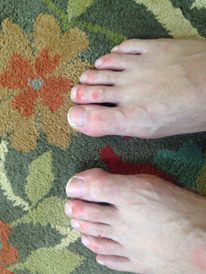
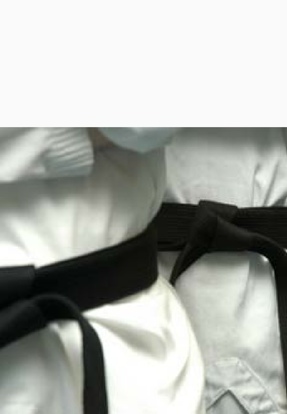

The best time to plant a tree was 20 years ago. The second best time to plant a tree is today.
Click here for a list of Nihon Goshin Aikido Dojos ~ and begin training with us today!



